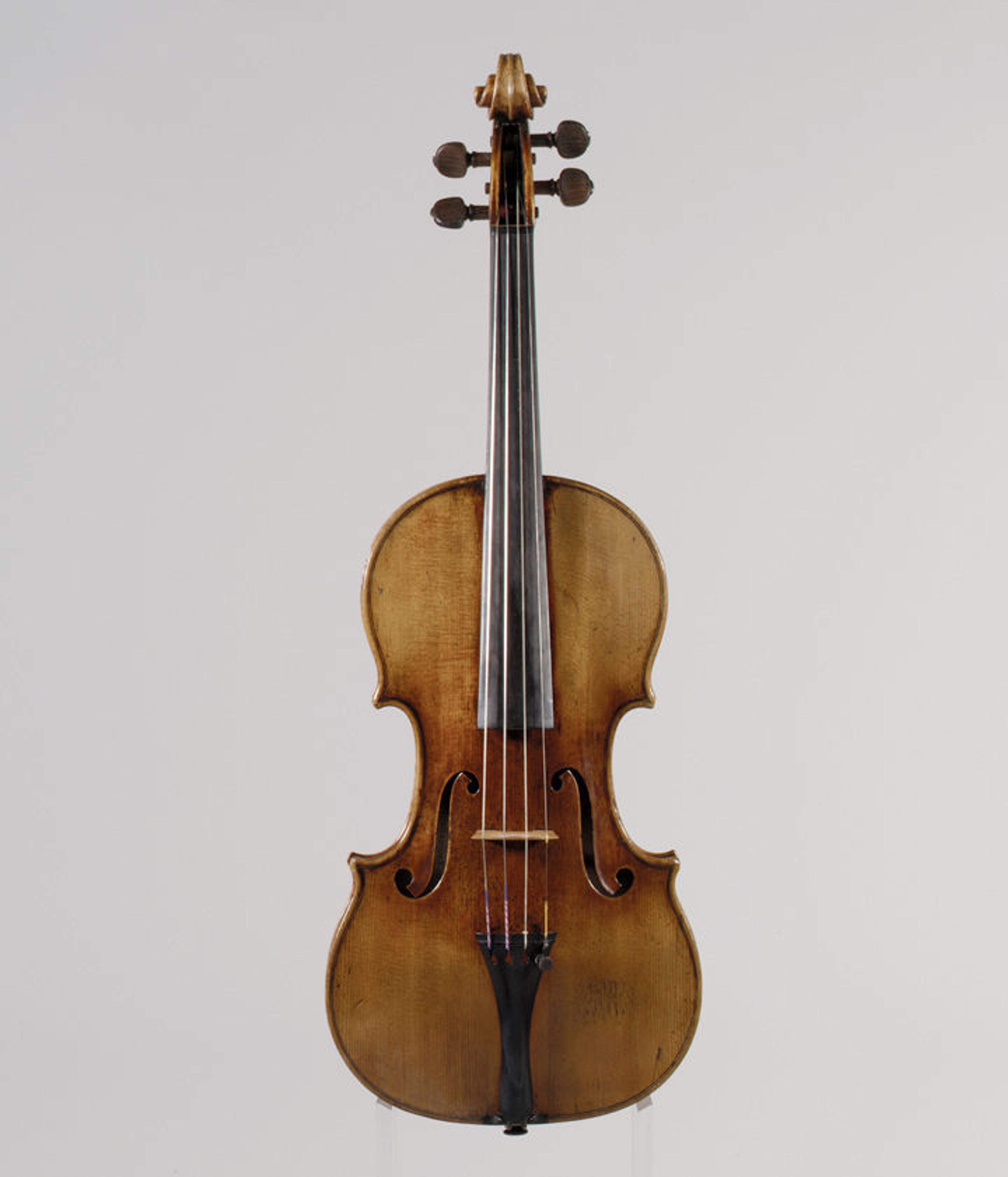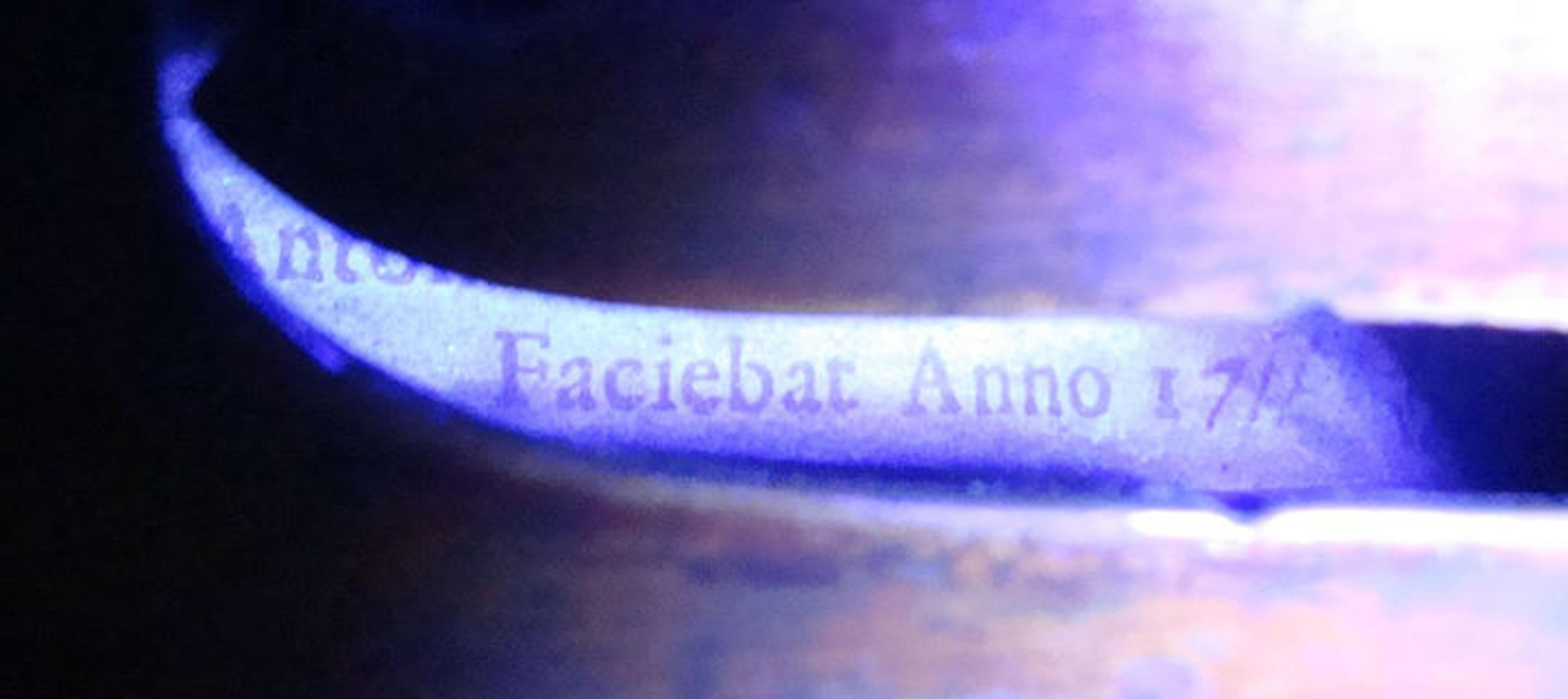Dating Stradivari's "Antonius" Violin

Antonio Stradivari (Italian, 1644–1737). "The Antonius" violin, 1711. Maple, spruce, ebony. The Metropolitan Museum of Art, New York, Bequest of Annie Bolton Matthews Bryant, 1933 (34.86.1 a)
«Establishing the exact date that a great instrument was made can be an important way of understanding how it fits into musical history and also within the development of an individual maker's craft. Antonio Stradivari (1644–1737) had an extraordinary career building instruments for more than seven decades, during which time he became known as an innovative maker who was constantly trying new ideas. Because he clearly marked the year on his labels, violin experts have been able to understand differences between instruments built during different periods of his career.»
Knowing the exact date of an instrument can also help to establish its history of ownership and act as an important way to trace an instrument through changing ownership over several hundred years. Some instruments by Stradivari, however, have had their labels removed or tampered with, or the labels have become degraded or damaged in a way that prevents them from being easily dated. "The Antonius" violin by Stradivari in The Met collection has suffered from confusion about its date for more than a century, though recent examinations have allowed us to firmly date the instrument.
"The Antonius" came to the Museum in the spring of 1934 along with another violin by Stradivari, "The Francesca," both of which were given as a bequest from the Bostonian sculptor Annie Bolton Matthews Bryant, who died in 1933. They were the first violins by this renowned maker to be owned by an American museum. Bryant herself was probably not a musician, but she inherited both instruments from her mother, Anne Faye Matthews, who played them until her death in 1915. Matthews presumably gave the instruments their nicknames, honoring Stradivari and his first wife, Francesca Ferraboschi.
The two instruments made a good contrasting pair for the Museum. "The Francesca" is dated 1694 and is a long-pattern violin, a model that Stradivari experimented with in the 1690s that is slightly longer and narrower than more typical violin models. Around 1700, Stradivari abandoned the long pattern and returned to making instruments according to the grand-pattern proportions established in the mid-17th century by another Cremona-based violin maker, Nicolò Amati. "The Antonius" is an example of a grand-pattern violin made by Stradivari during his mature years, a highly valued instrument by players across the centuries.
Matthews purchased "The Antonius" from Felix Berber, a well-known violinist from Geneva. Berber had been the concertmaster of the Leipzig Gewandhaus Orchestra, taught at the Royal Academy of Music in Munich, and would later teach at the Geneva Conservatory of Music. He also appeared as a soloist and made his American debut performing the Brahms Violin Concerto with The Symphony Society of New York (a predecessor orchestra to the New York Philharmonic) in October 1910. The following month, Berber performed the same piece with the Boston Symphony Orchestra, a concert that Anne Matthews likely attended.
Berber had owned the Stradivari violin since 1904, but in 1909 he also acquired a great violin made by Giuseppe Guarneri, del Gesú. He probably brought both violins on tour to the United States in the hope of selling the Stradivari violin to a rich American. On December 24, Berber signed an affidavit in the office of the American Consulate in Geneva affirming that the instrument was made by Antonio Stradivari and finalizing the sale to Matthews.
The date of "The Antonius" has long been misunderstood. Stradivari used pre-printed labels that he had made up in large batches. After 1700, he had labels made that, rather than printing the entire year, had a single printed numeral "1" followed by blank space for the maker to write out the other numerals denoting the year. After centuries of dirt accumulation and some degradation, the handwritten numerals on the label were difficult to read.
In Bryant's will and correspondence with The Met, the date of the instrument was said to be 1721. After examining the instrument in the 1950s, however, the New York violin expert Rembert Wurlitzer was convinced that the label should be read as 1717 and firmly dated as having been made within Stradivari's "golden period," which is said to have lasted from around 1700 until 1720, when many of the master's greatest instruments were made. The date of 1717 made the instrument even more desirable, and Museum materials began to use the 1717 date in connection with "The Antonius." Curators and conservators later became more cautious and referred to the instrument as having been made in either 1717 or 1721.

The label inside "The Antonius" as viewed under ultraviolet light. Photo by the author
In order to come to a conclusion about the date, the Department of Musical Instruments consulted with Yana van Dyke, a paper conservator at the Museum, about the label inside "The Antonius." After examining the paper, she confirmed that the label was consistent with early 18th-century paper and that there had been no evidence of it having been tampered with or removed. She interpreted the label as reading "17ii," or "1711," and with the help of ultraviolet light this is made obvious to even the most untrained eye.
Further, "17ii" is how Stradivari is known to have dated several other instruments from that year, including the famed "Duport" cello and the "Earl of Plymouth, Kreisler" violin. This examination finally firmly establishes the date of this remarkable violin.
Sean Avram Carpenter performs George Gershwin's "It Ain't Necessarily So" from his opera Porgy and Bess on "The Antonius" violin, accompanied by pianist Gabriela Martinez
Related Links
Of Note: "Stradivari and the Transformation of Tradition" (March 23, 2015)
Of Note: "Tracing the History of Antonio Stradivari's 'Gould' Violin" (April 25, 2016)
Jayson Dobney
Jayson Dobney is the Frederick P. Rose Curator in Charge in the Department of Musical Instruments.
Follow Jayson on Twitter: @JayKerrDobney